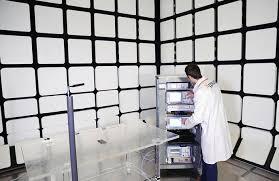In today’s connected world, wireless technology is the backbone of everything from smartphones and smart homes to industrial automation and healthcare devices. As innovation in wireless communication accelerates, ensuring that products meet safety, quality, and regulatory standards is more critical than ever. That’s where wireless product certification comes in.
This article explores the essentials of wireless product certification—what it is, why it matters, the major global certification bodies, and how manufacturers can navigate the complex approval process efficiently.
What is Wireless Product Certification?
Wireless product certification is the process of verifying that a wireless-enabled device complies with regulatory, technical, and safety standards in the markets where it will be sold. These certifications ensure that the device operates safely within designated frequency bands, does not cause harmful interference, and meets performance requirements.
Common technologies requiring certification include:
-
Wi-Fi (802.11 standards)
-
Bluetooth
-
Zigbee
-
LTE/5G
-
RFID and NFC
-
LoRa and other IoT-specific protocols
Why Wireless Certification Matters
-
Legal Market Entry
Certification is often a legal requirement for market entry. Selling uncertified devices can lead to bans, product recalls, fines, or reputational damage. -
Product Safety and Interference Control
Certified devices are tested to ensure they don’t interfere with other devices and meet electromagnetic compatibility (EMC) and RF exposure limits. -
Customer Trust and Market Credibility
Certification demonstrates your commitment to quality and compliance, boosting buyer confidence and differentiating your product. -
Global Market Access
Each region has its own regulatory requirements (e.g., FCC in the US, CE in Europe, TELEC in Japan). Certification ensures access to global markets.
Major Wireless Certification Bodies and Standards
United States – FCC Certification
-
Governed by the Federal Communications Commission (FCC)
-
Required for all RF devices sold in the US
-
Covers EMC, RF exposure (SAR), and device labeling
European Union – CE Marking
-
Requires compliance with the Radio Equipment Directive (RED)
-
Includes health, safety, EMC, and efficient use of the radio spectrum
-
Self-declaration or third-party testing may be needed
Canada – ISED Certification
-
Managed by Innovation, Science and Economic Development Canada
-
Similar to FCC with additional documentation requirements
Japan – TELEC
-
Overseen by the Ministry of Internal Affairs and Communications
-
Focuses on radio frequency laws and technical standards
China – SRRC and NAL
-
State Radio Regulation of China (SRRC) approval required for RF use
-
Network Access License (NAL) may be required for telecom equipment
Other Key Certifications
-
ANATEL (Brazil)
-
KCC (Korea)
-
NCC (Taiwan)
-
MIC (India)
-
Wi-Fi Alliance, Bluetooth SIG: For interoperability and branding
Steps to Wireless Product Certification
-
Define Markets and Identify Requirements
Determine where you plan to sell the device and identify applicable regulations. -
Product Testing and Pre-Compliance Evaluation
Engage with accredited labs to pre-test for RF, EMC, and SAR compliance. -
Documentation Preparation
Prepare technical files, test reports, schematics, and user manuals. -
Submit to Certification Body
Depending on the region, this may involve submitting to FCC, CE, etc., or undergoing third-party testing. -
Labeling and Declarations
Apply proper regulatory labels (e.g., FCC ID, CE mark) and provide declarations of conformity. -
Maintain Compliance
Retest after hardware changes or new firmware updates. Keep compliance documents updated for audits.
Tips for a Smooth Certification Journey
-
Design with Compliance in Mind: Start thinking about certification requirements early in the product design phase.
-
Use Pre-Certified Modules: Speeds up the process by reducing the scope of testing needed.
-
Partner with Accredited Labs: Work with experienced testing labs familiar with international standards.
-
Keep Documentation Organized: Regulatory bodies may request documentation years after approval.
-
Plan for Time and Cost: Certification can take weeks to months and may cost thousands of dollars.
Conclusion
Wireless product certification isn’t just a regulatory checkbox—it’s a gateway to global markets, product reliability, and consumer trust. As wireless technology continues to evolve, navigating the certification landscape will remain a critical part of any product development strategy.
By planning ahead, understanding the requirements of each target region, and working with the right experts, companies can ensure a smoother path to market—and a stronger foundation for innovation.

